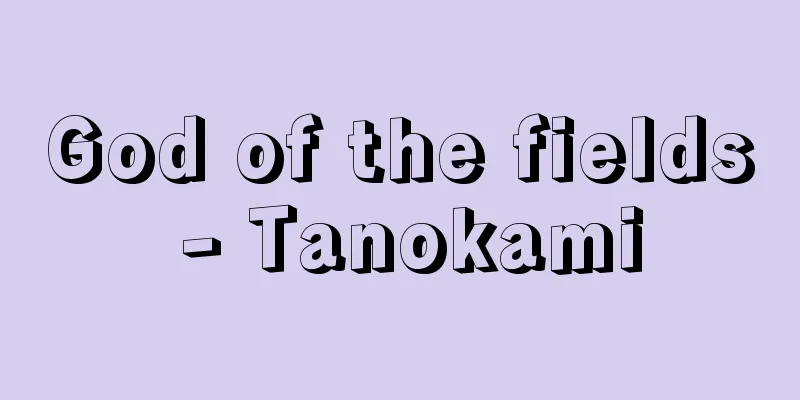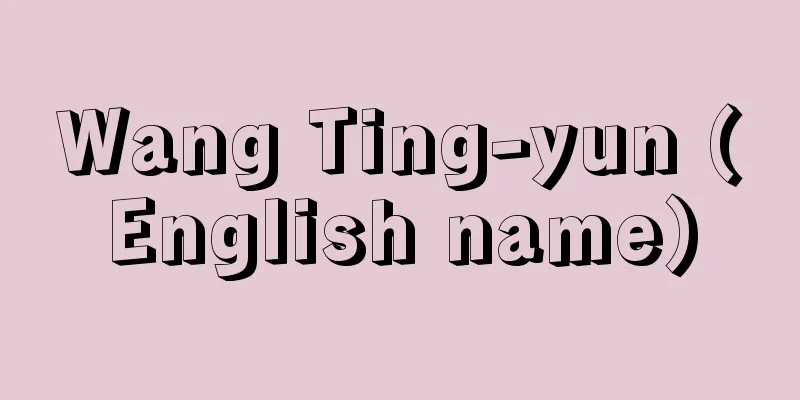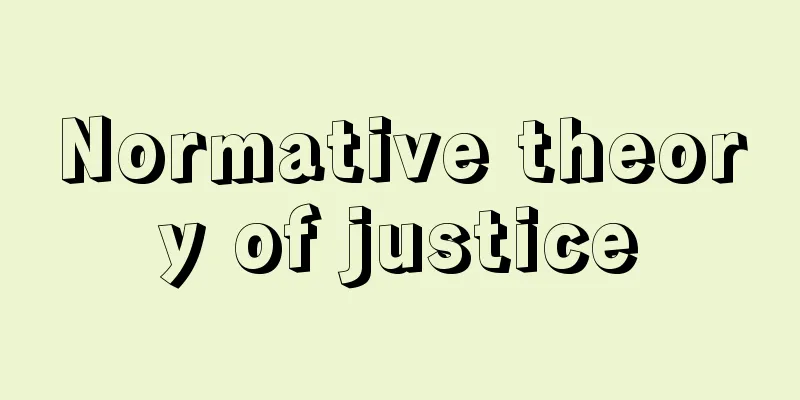God of the fields - Tanokami

|
A general term for gods who help rice grow and bring about bountiful harvests. In Japan, where wet-rice cultivation has been practiced since ancient times, people have worshiped rice field gods to pray for good harvests and give thanks for the harvest. Ukanomitama and Ukemochinokami, who appear in classical writings, are thought to be one type of god, and the Niinamesai and Niinamesai ceremonies, which have been held at the imperial court since ancient times, are closely related to festivals to the rice field gods. Currently, the name given to the rice field god among people varies from place to place, and in addition to being called "rice field god," they may also be called "sakugami," "nougami," or "tsukurigami." In some places they have been syncretized with other beliefs and are recognized as rice field gods, including the boar god, Ebisu, Daikoku, Inari, earth god, hearth god, Koujin, Shanichisama, and Ushisama. There are festivals that are held whenever rice cultivation is carried out, and festivals that are held on fixed dates each year. Many agricultural ceremonies fall into the former category. After sowing rice seeds, a natural tree such as a Japanese nut or willow is erected in part of the rice paddy as a bed for seedlings, and burnt rice and other offerings are made to it. There are also many other examples where, at the start and end of rice planting, three bunches of seedlings are placed at the water outlet of the rice paddy or at a fixed location indoors (such as an arakamidana or kamidana), and offerings of rice cakes and sacred sake are made to worship them. The large rice planting ceremonies that were widely held until recently in the mountainous areas of the Chugoku region in particular suggest that rice planting was an important religious ceremony to welcome the rice field god. Also, at harvest time, there is a ritual called "Hokake" in which several bundles of rice are harvested and hung in a corner of the rice field or taken home and enshrined before the rice harvest begins, followed by a harvesting festival after the harvest, all of which are worshipped as the god of the fields. Behind these agricultural rituals can be seen the idea of the rebirth and growth of the rice spirit (Inadama), and each ritual is closely related to the others. A designated rice field is often designated as the ritual site, and outdoor rituals are thought to convey an ancient style. On the other hand, there are festivals that are incorporated into the calendar and fall on fixed dates each year, such as the Rice Field God Festival on the 16th of March and October, the 10th of February and October in eastern Japan, and on the day of the boar in February and October in western Japan, the Aeno Koto in Oku-Noto (January 9th and November 5th), and the Ushi no Hi Festival in northwestern Kyushu (the day of the ox in February and November). There are also places with spring and autumn shrine festivals, which are characterized by the fact that the dates are symmetrical on either side of New Year's Day, suggesting a connection with the Imperial Court's Niiname-sai and Niiname-sai festivals. Many of these are accompanied by legends of the coming and going of gods, in which a god comes down from the mountains in the spring to protect rice cultivation as the god of the fields, and then rises from the fields after the autumn harvest to become the god of the mountains (some explain the coming and going of the house and the fields). Also, in some places, rice seed sacks or rice straw baskets are used as altars during the New Year, making New Year an important occasion for rice field deity worship, and a combination of the Toshigami and the rice field deity can be seen. Thus, in addition to being a guardian deity who protects and cultivates rice crops, the rice field deity is also recognized as a grain spirit, and these two aspects are expressed in the rice field deity festivals in various places. It is also possible to see the character of an ancestral spirit in the deity, and there are even traditions surrounding the deity as a deity with hearing or visual impairments, so the character of the rice field deity and the associated worship can be quite complex. In southern Kyushu (Satsuma, Osumi, and southern Hyuga), stone statues of the rice field god (Tanokansaa) holding a ladle and a pestle are known to be enshrined on the edges of rice fields and on footpaths. Some of these statues are modeled after phallic figures from behind. [Noriaki Tanaka] [Reference] | |They are welcomed and sent off at Sanaburi (a festival to send off the rice god after rice planting), at the start of rice planting, and at harvest festivals. ©Shogakukan "> God of the fields Source: Shogakukan Encyclopedia Nipponica About Encyclopedia Nipponica Information | Legend |
|
稲の生育を助け、豊穣(ほうじょう)をもたらしてくれる神の総称。古くから水稲耕作の行われたわが国では、豊作を祈願し、収穫を感謝して田の神を祀(まつ)ってきた。古典に現れる倉稲魂(うかのみたま)や保食神(うけもちのかみ)はその一種と考えられ、また、古代以来、宮廷の神事として行われてきた祈年祭や新嘗祭(にいなめさい)は、田の神祭りと密接にかかわるものである。現在、民間での田の神の名称は各地各様で、田の神とよぶほか、作神(さくがみ)、農神(のうがみ)、作り神とよばれたり、他の信仰と習合して、亥(い)の神、えびす、大黒(だいこく)、稲荷(いなり)、地神(じがみ)、かまど神、荒神(こうじん)、お社日(しゃにち)さま、お丑(うし)さまなどを田の神と認めている所もある。 その祭りには、稲作の実作業に応じてそのつど行われるものと、毎年一定の月日を決めて営まれるものとがある。前者としては、農耕儀礼の多くがこれに相当する。種籾(たねもみ)を播(ま)いたあと、苗代(なわしろ)田の一部にカヤ・ヤナギなどの自然木を立てて田の神の依代(よりしろ)とし、これに焼き米などを供えて祀ったり、田植開始時や田植終了時に、田の水口(みなくち)や屋内の一定場所(荒神棚や神棚など)に苗三把を据え、餅(もち)・神酒(みき)などを供えて祀る例が多い。とくに中国地方山地で最近まで広く行われていた大田植は、田植が田の神を迎えて行う重要な神事であったことをうかがわせるものである。また収穫の際には、初めに数束の稲を刈り取って田の一隅に掛けたり家に持ち帰って祀ってから稲刈りにとりかかる穂掛けの儀礼があり、続いて収穫後には刈上げの祭りをするが、祭祀(さいし)対象はいずれも田の神である。これらの農耕儀礼の背景には稲霊(いなだま)の再生・成長の観念がうかがえ、各儀礼は密接に関連しあっている。祭場には定まった田があてられることが多く、屋外での祭祀は古風を伝えるものと考えられる。 一方、暦日に組み込まれて毎年一定の祭日をもつものには、東日本の3月と10月の16日、2月と10月の10日、西日本の2月と10月の亥の日の田の神祭りや、奥能登(のと)のアエノコト(1月9日と11月5日)、九州北西部の丑の日祭り(2月と11月の丑の日)などがある。春秋の社日の所もあり、正月を挟んで期日が対称的に存在するのが特徴で、宮中の祈年祭や新嘗祭との関連をうかがわせる。これらには、神が春に山から降りてきて田の神として稲作を守り、秋の収穫後には田からあがって山の神になるという神去来(かみきょらい)の伝承を伴うものが多い(家と田との去来を説くものもある)。 また、正月には種籾俵やかますを祭壇にする所が各地にあり、正月も田の神祭祀の重要な機会で、年神と田の神との結合がみられる。このように、田の神には稲作を守り育てる守護神としてのほかに、穀霊的性格も認められ、各地の田の神祭りにはこの二つの面が表れている。また、祖霊的性格をみることも可能であり、さらには耳や目の不自由な神とする伝承もまつわりついており、田の神の性格やその祭祀には、なかなか複雑なものがある。 また南九州(薩摩(さつま)、大隅(おおすみ)、日向(ひゅうが)南部)では、杓子(しゃくし)やすりこ木を持った田の神(タノカンサア)の石像を田のほとりや小道などに祀ることで知られる。なかには後ろ姿を陽物に模したものがある。 [田中宣一] [参照項目] | |さなぶり(田植え終わりに田の神を送る祭り)や田植え始め、収穫祭のたびに迎え送られる©Shogakukan"> 田の神 出典 小学館 日本大百科全書(ニッポニカ)日本大百科全書(ニッポニカ)について 情報 | 凡例 |
<<: Tanohata [Village] - Tanohata
Recommend
Sphenisciformes
…A general term for birds in the Spheniscidae fam...
Innokinshin - Innokinshin
The Insei period was supported financially by the ...
Marek's disease
A chicken disease caused by herpesvirus group B. T...
melon
Nutrition, Functions & Cooking Tips Melons ar...
Work function
A term in solid-state physics, it is an important...
Air Self Defense Force
…Externally, it is called the Air Self Defense Fo...
Buddhist sculptor genealogy - BUSHIKEISU
The term literally means the genealogy of a family...
monsoon
〘 noun 〙 (monsoon) ① = kisetsufuu (seasonal wind) ...
Social History Debate (English: Shè huì shǐ lùn zhàn)
A debate fought from 1928 to the mid-1930s over th...
Çiftlik (English spelling)
Originally, it meant land ploughed by two oxen, i....
Liebknecht, Karl
Born: August 13, 1871 in Leipzig Died January 15, ...
Acanthosomatidae
…General term for insects in the family Acanthoso...
Sarai - Sarai (English spelling)
It was the capital of the Golden Horde in the 13t...
Enugu - Enugu (English spelling)
Enugu is the capital of Enugu State in eastern Ni...
Oguraike Pond
This was once a lake located in the lowest part of...
![Sakaki [town] - Sakaki](/upload/images/67cba7a45f763.webp)








